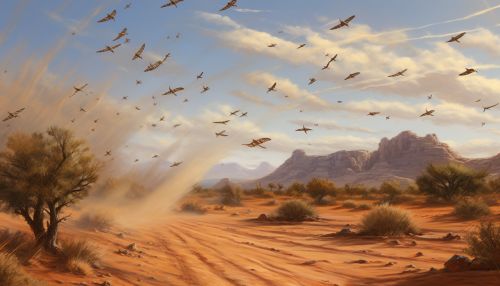2020 locust infestation
Introduction
The 2020 locust infestation was a significant event in the field of entomology and agriculture, causing widespread damage to crops and posing a serious threat to food security in several regions. This event was primarily caused by the desert locust (Schistocerca gregaria), a species known for its destructive potential when present in large numbers.


Background
Desert locusts are a species of short-horned grasshoppers that are known for their ability to change behavior and form swarms. These swarms can travel great distances, causing extensive damage to vegetation. The 2020 locust infestation was particularly severe due to a combination of factors including favorable breeding conditions and challenges in controlling the spread.
Breeding Conditions
The breeding conditions for desert locusts were particularly favorable in 2020 due to a series of unusual weather events. Heavy rains in the Arabian Peninsula and the Horn of Africa created ideal conditions for locust breeding. The rains led to an increase in vegetation, providing ample food for the locusts and enabling rapid population growth.
Spread of the Infestation
The locust swarms spread rapidly across several regions, including East Africa, the Middle East, and South Asia. The swarms were able to travel large distances due to favorable wind conditions. The locusts were also able to reproduce rapidly due to the abundant food supply, leading to an exponential increase in their numbers.
Impact on Agriculture
The 2020 locust infestation had a significant impact on agriculture in the affected regions. The locust swarms consumed large quantities of crops, leading to significant losses for farmers. The infestation also threatened food security in several regions, as the loss of crops could lead to food shortages.
Control Measures
Various control measures were implemented to combat the 2020 locust infestation. These included the use of pesticides, biopesticides, and other forms of pest control. However, these measures faced several challenges, including logistical difficulties and concerns about the environmental impact of pesticide use.
Conclusion
The 2020 locust infestation was a significant event that highlighted the challenges of managing large-scale pest infestations. The event underscored the need for effective pest management strategies and the importance of monitoring and early warning systems in preventing such infestations.
